The Coromandel artist using colour to brighten up her gallery
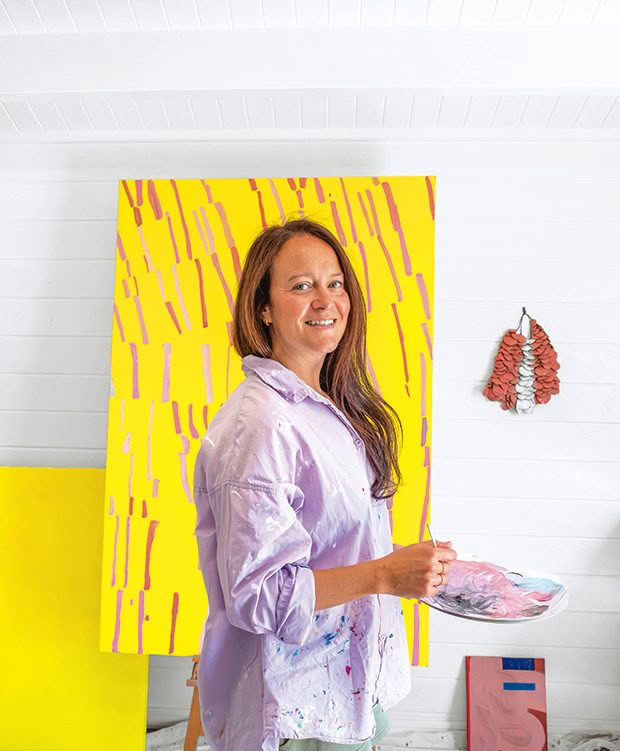
The sun shines over the Coromandel Peninsula, inspiring artists to create. After a challenging year for the remote region, with storms washing out main access roads, the Mercury Bay Art Escape is back to celebrate its natural and artistic wonders. Meet one of the exhibitors.
Words: Kate Coughlan Photos: Simon Young
Artist Annie Smits Sandano is a hard woman to tuck neatly into a box. She’s a Kiwi. But she’s not. A Brazilian. But not really, as she’s also a Kiwi. She’s an honours graduate of Elam, Auckland University’s School of Fine Arts, and attended the renowned Rhode Island School of Design in Providence in the United States. She went to a fine arts college in Florence, Italy. Her studio was in London until it wasn’t (thanks Covid-19); she lives in Hahei when she isn’t living in Auckland. She’s a printmaker, ceramicist and a painter. While she has a singular vision for her creations, bringing them into being involves manual work that is anything but effortless.
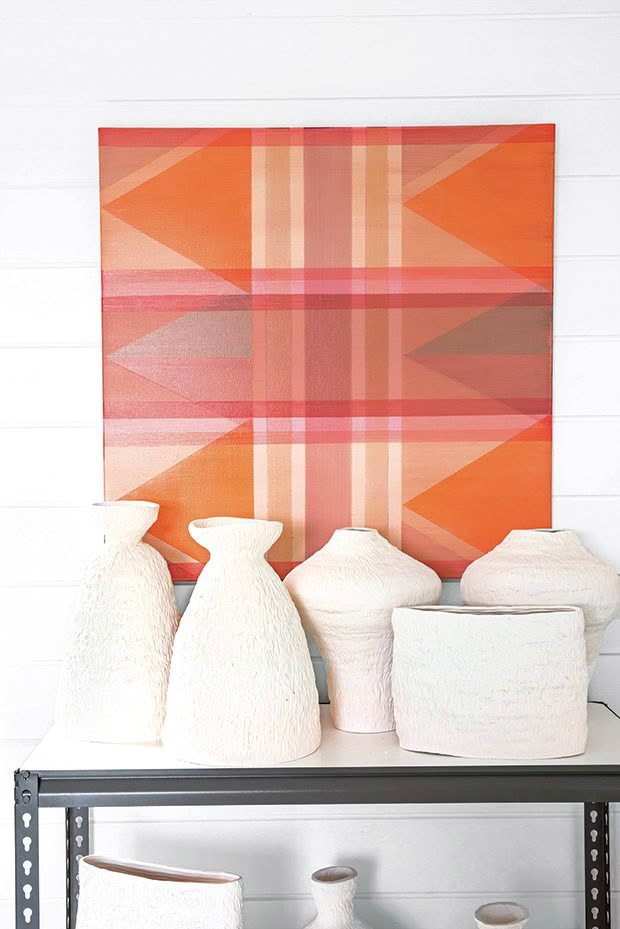
Ceramic vessels from her Fluffy Series sit in front of a mixed-media work named Gold Crest Wool Blanket.
“My goal is to create objects that operate on a visceral level to inspire and transport the viewer with colour, light, texture and shapes,” Annie says. “But much of the satisfaction comes from working with materials in traditional, sometimes antiquated, labour-intensive, methods.”
Young and newly graduated from Elam with a major in printmaking, Annie took a deep breath and borrowed $5000 from her father to buy a printing press. It wasn’t any old press but a bespoke, hand-operated one made in Christchurch by a retired engineer — big blocks and rollers requiring a big effort to operate. She was determined to make a living from art.
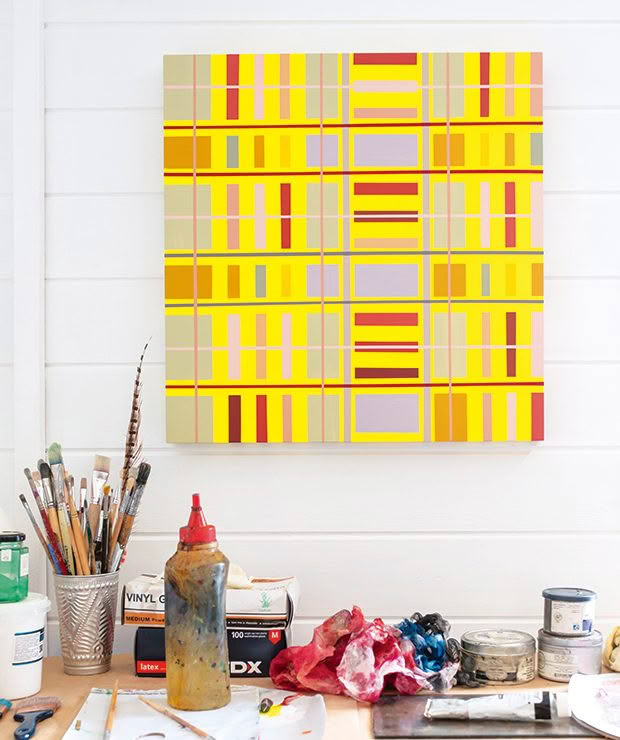
A painting entitled Kaipoi Mill Wool Blanket.
“I had a loan to pay back; my dad didn’t make that money just to give it to me. I genuinely wanted this to be my livelihood, and I was realistic about how much time it would require, so I worked on my art and nothing else.”
She learned how to make a living from her creativity while working at the Print Shop in Auckland’s Remuera. “I was lucky to get a job there; in fact, it was super-important to me in my overall career because it helped me see behind the scenes of the gallery-artist interaction. What are the practicalities of earning a living from art? How do people price their work? How do they interact with a gallery or even approach a gallery in the first place?
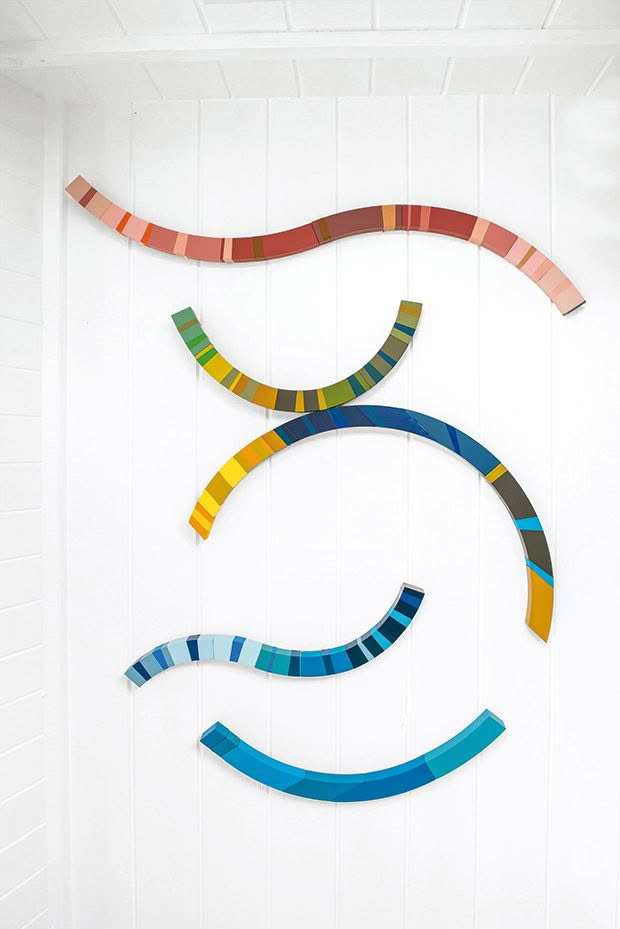
Sun Seeker, a mixed-media wall installation.
“The Print Shop also taught me how to put things together in a way that allows a gallery to represent you. I learned I didn’t want to have a relationship with only one gallery and be at the mercy of that one relationship. I wanted to be autonomous. So, I made a list of all the galleries I wanted to work with, cold-called them, and showed them my portfolio.”
She thinks this confidence might come from her cross-cultural upbringing — the family moved between Brazil and New Zealand several times. Her parents were avid travellers, and Annie made her first journey to New Zealand when she was three. After falling in love with the country, they returned to São Paulo, packed up what they wanted, sold the rest, and moved to the Hamilton community of Tamahere, where Annie and her younger sister attended school.
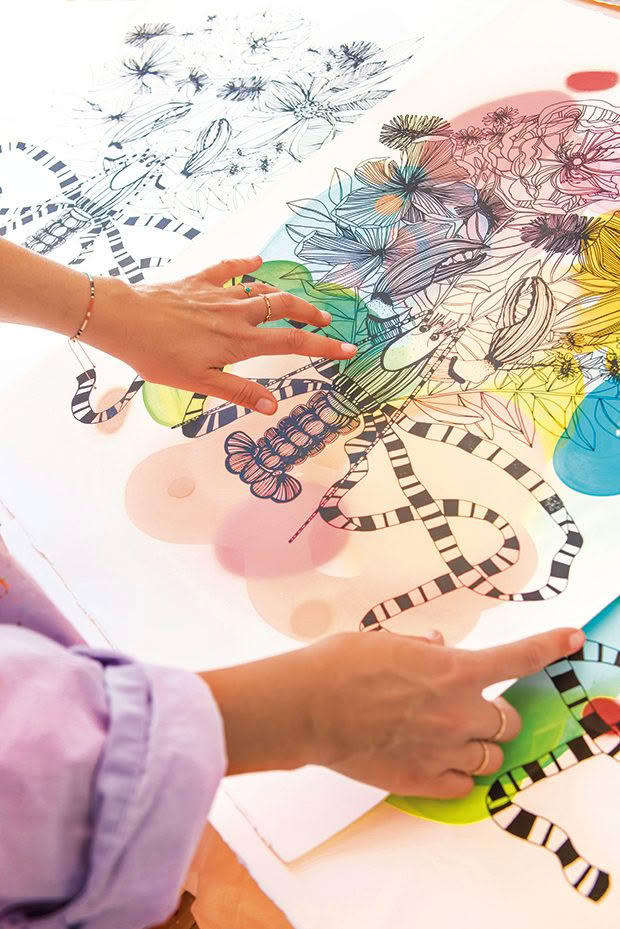
A limited-edition screenprint called Happy Days.
“Our parents didn’t know anyone in New Zealand when they emigrated. It was an adventure. Dad was a management consultant with a master’s from Columbia University in New York. He is Brazil-born of Italian and Portuguese heritage. My mother is Latvian-Estonian and was born in Austria.
“We are a kind of patchwork. We’re from everywhere and nowhere, and not in a bad way. We have that manner of thinking that we can make our way anywhere in the world.”
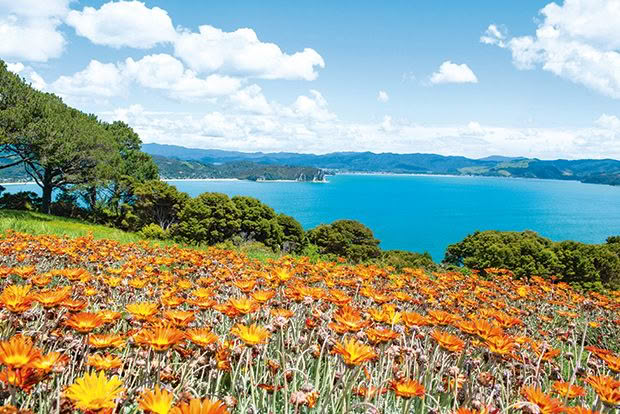
Five years after arriving in Hamilton, the family returned to Sao Paulo when Annie’s father got an irresistible job offer. The decision was tough; the family loved life in Aotearoa, but it was an excellent opportunity, and it came with a fixed timeframe.
Annie attended an international school in Brazil and achieved an International Baccalaureate before the family returned to New Zealand in time for her to go to Elam.

An early morning coffee (or two) overlooking Mercury Bay and Waitaia Peak after a swim or walk at Hahei Beach 10 minutes down the road is how most days begin for Annie. She mainly produces commissions and works for her galleries but has also hosted exhibitions on-site showing works by colleagues and local artists;
Her first run of prints was a great success, and within a relatively short time, 22 galleries throughout the country were selling her work.
“Art is a fickle business. It is hard to explain why one thing takes off while another doesn’t. Pretty soon, it was full-on with production. Everything is made by hand — mixing inks, carving blocks and rolling my press. It is a huge workout if you spend an entire day printing.”
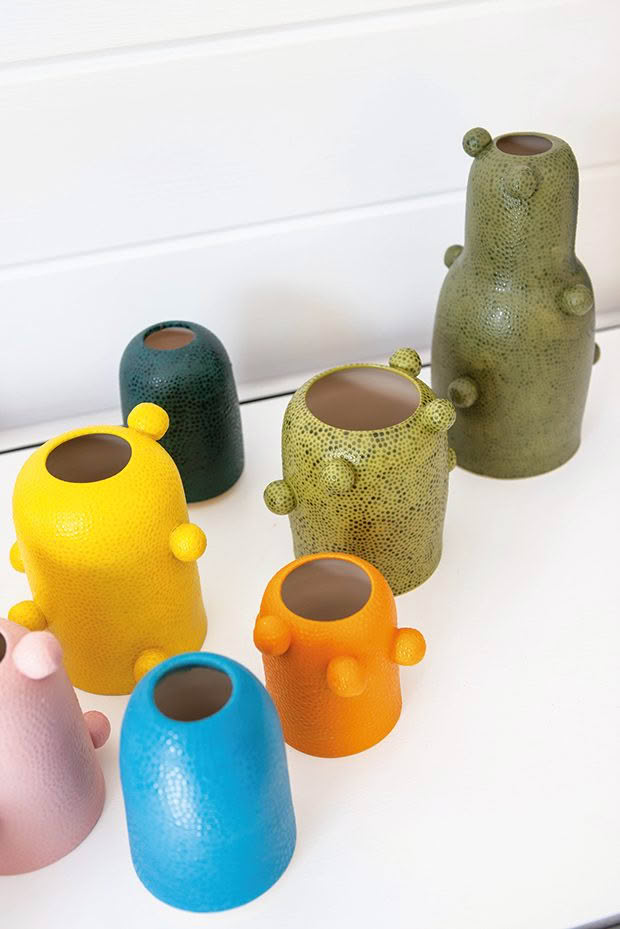
Annie still uses her big press and is proud she paid it off years ago. Her work, some years later, blurs the edges of where one medium begins and the other ends without predictability, leaving the viewer to explore the visual dialogue as they choose.
While her limited-edition prints are made using traditional analogue techniques, she also works in ceramics, slowly and carefully producing handmade tactile works. Her creative process often employs materials she has personally developed, and she uses methods hybridised from printmaking when she paints.
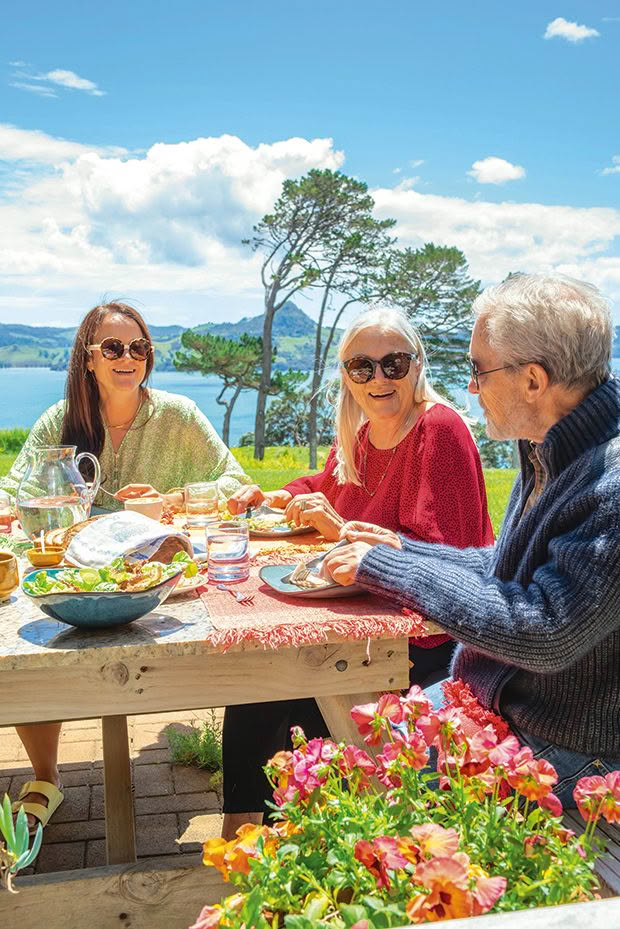
Annie shares a meal with her mum Helve and dad Duilio.
Her interest is in continually developing a diverse portfolio of works and approaches, working solo and collaboratively and exhibiting on various platforms. Art lovers might know Annie for her printmaking, but it is only comparatively recently that she has begun to show her paintings and ceramics. She was on a residency in London at Turning Earth Ceramics when Covid-19 disrupted her plans, requiring permanent relocation to Auckland.
The pandemic hit at an inopportune moment, coinciding with a global upsurge in the appreciation of contemporary ceramics, predominantly influenced by London. Despite dedicating four years to studying in Britain, Annie considers herself to be still learning.
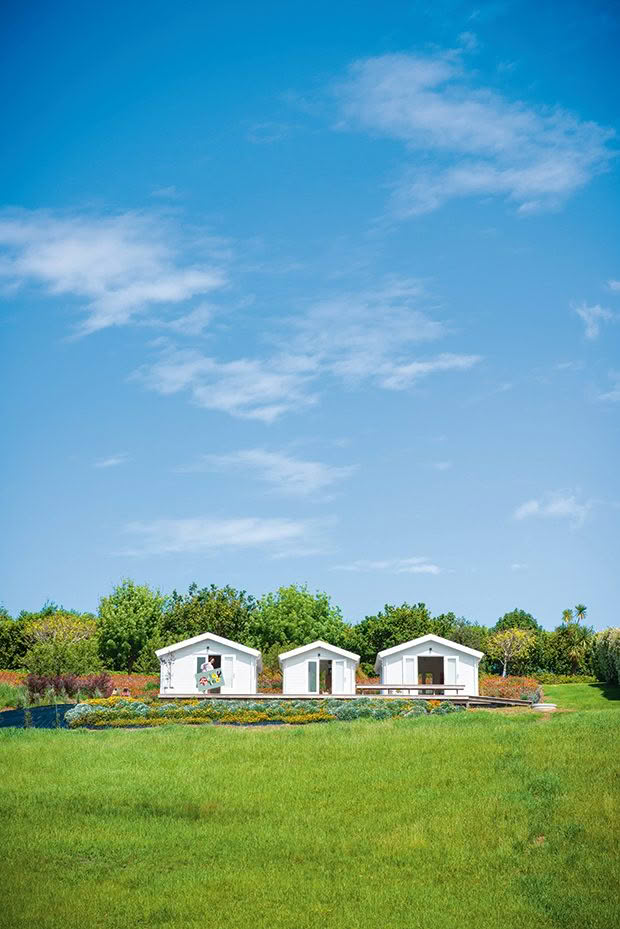
Paul Klee’s quote, “Colour is the place where our brain and the universe meet,” set in motion a project to transform what was once a fallow paddock on family land next to Annie’s home into the site of “continuous creative endeavour”. Her studio, consisting of three individual buildings with views of Cook’s Beach, Lonely Bay and Buffalo Beach, was built gradually over a year amid storms and material shortages. To economise, Annie painted the interiors and exteriors herself and enlisted the help of family members in the garden. Every bit of energy was well worth it, she says.
“As an artist, making a change to your artwork is always a concern; will it be accepted or not? How are people going to feel about this change? But at a certain point, you have to do it. To evolve, you need to work through new lines of inquiry and develop new ways of thinking; the only way is to do it.
“There’s also the positive confirmation that comes on the other side when people are curious and supportive of changes in your practice and want to see evolution.

“I am grateful that my clients and people who have commissioned my work are supportive. So, I have moved past the fear, and am now confident about keeping moving and developing new and different bodies of work.
“And that’s exciting.”
ART ESCAPE
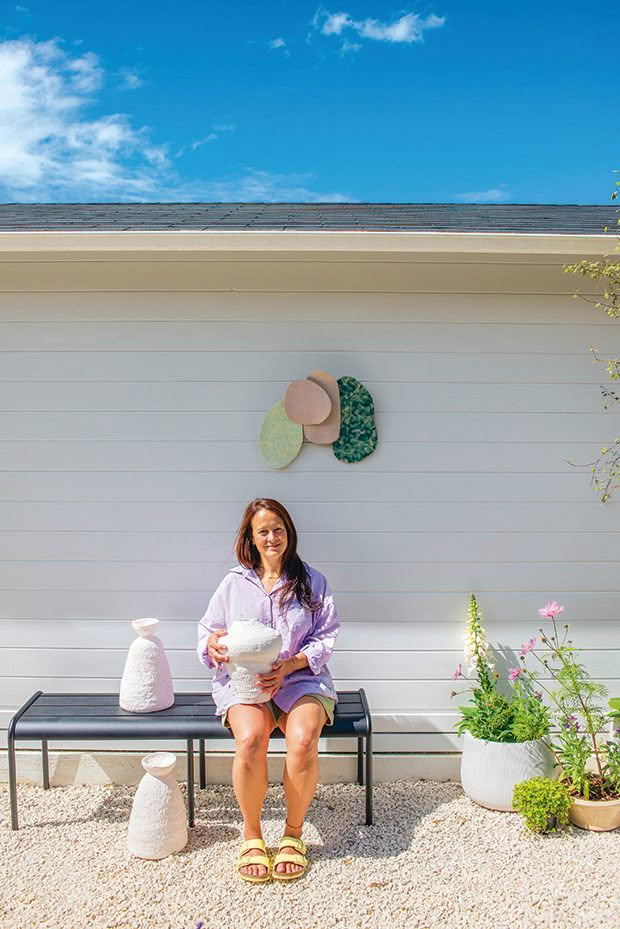
Annie’s studio, overlooking Mercury Bay on the Coromandel Peninsula’s eastern coast, is open for two weekends on March 2 and 3 and March 9 and 10, 2024, as part of the Mercury Bay Art Escape. Visit the studios of 40 artists to experience an eclectic mix of art mediums and the opportunity to chat with member artists, see their work in progress, and buy directly from their studios. mercurybayartescape.com
ROYAL PATRONAGE
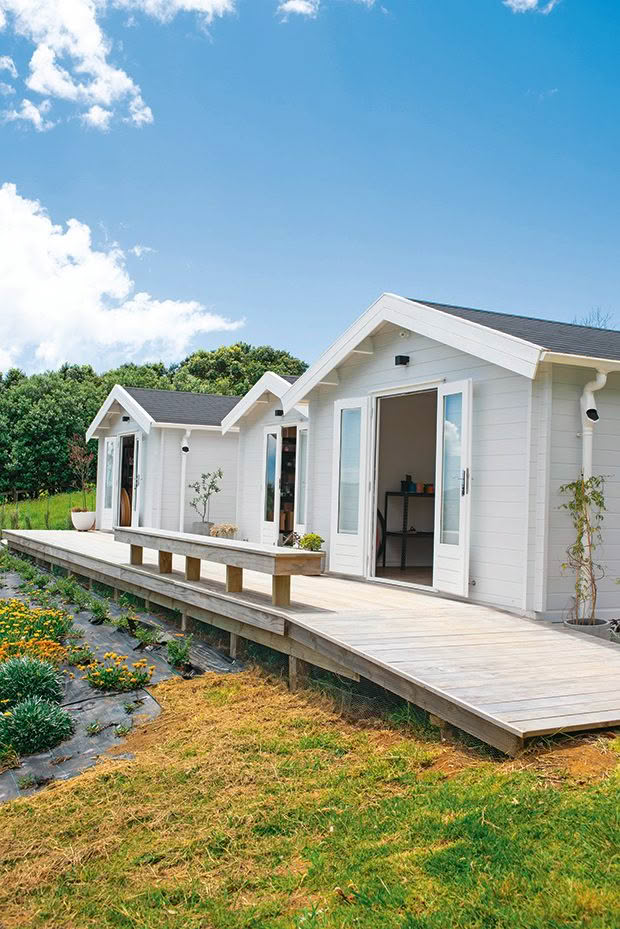
Annie’s works are featured in the Arts House Trust, The Hilton Group and the Deloitte Art Collection. Her ceramic installation was a finalist in the 2019 Portage Ceramic Awards and made it to the catalogue cover. The Prince and Princess of Wales have a piece in their private collection. A painting by Annie was a finalist in the Waikato Society of Arts 2022 New Zealand Painting and Printmaking Awards.
anniesmitssandano.com
Love this story? Subscribe now!
 This article first appeared in NZ Life & Leisure Magazine.
This article first appeared in NZ Life & Leisure Magazine.
